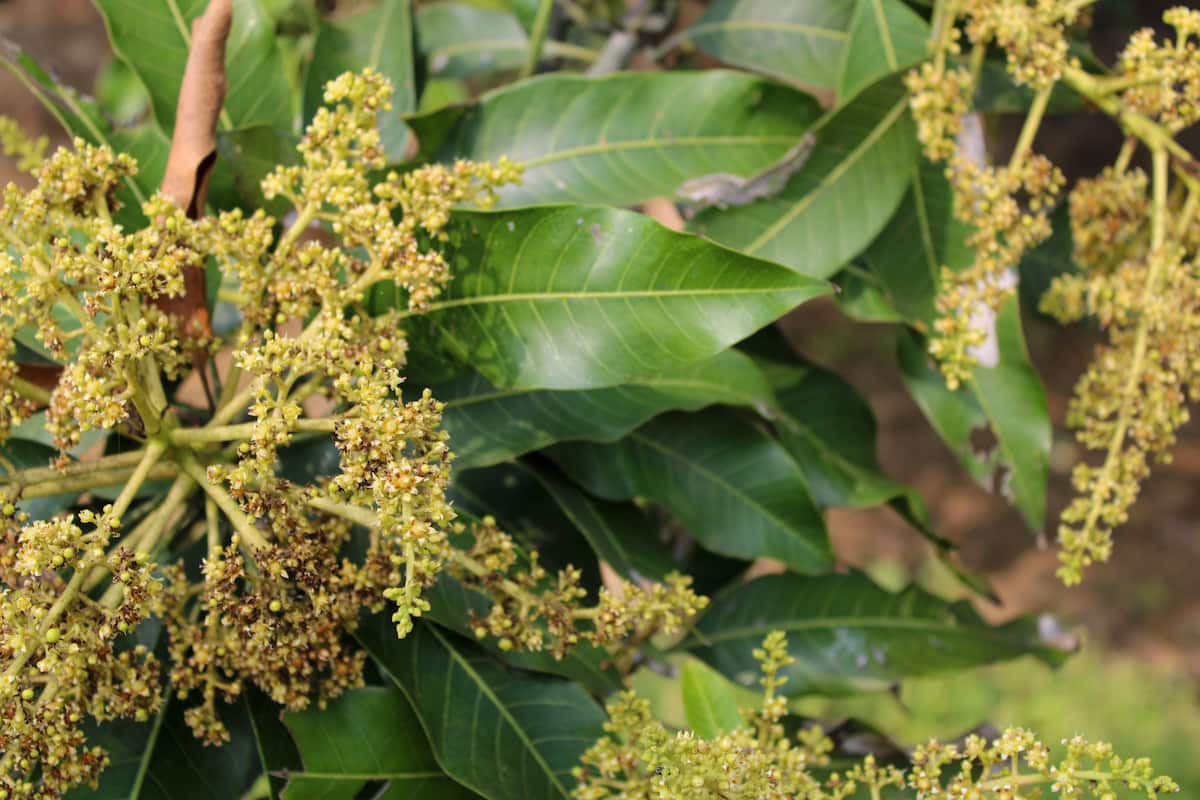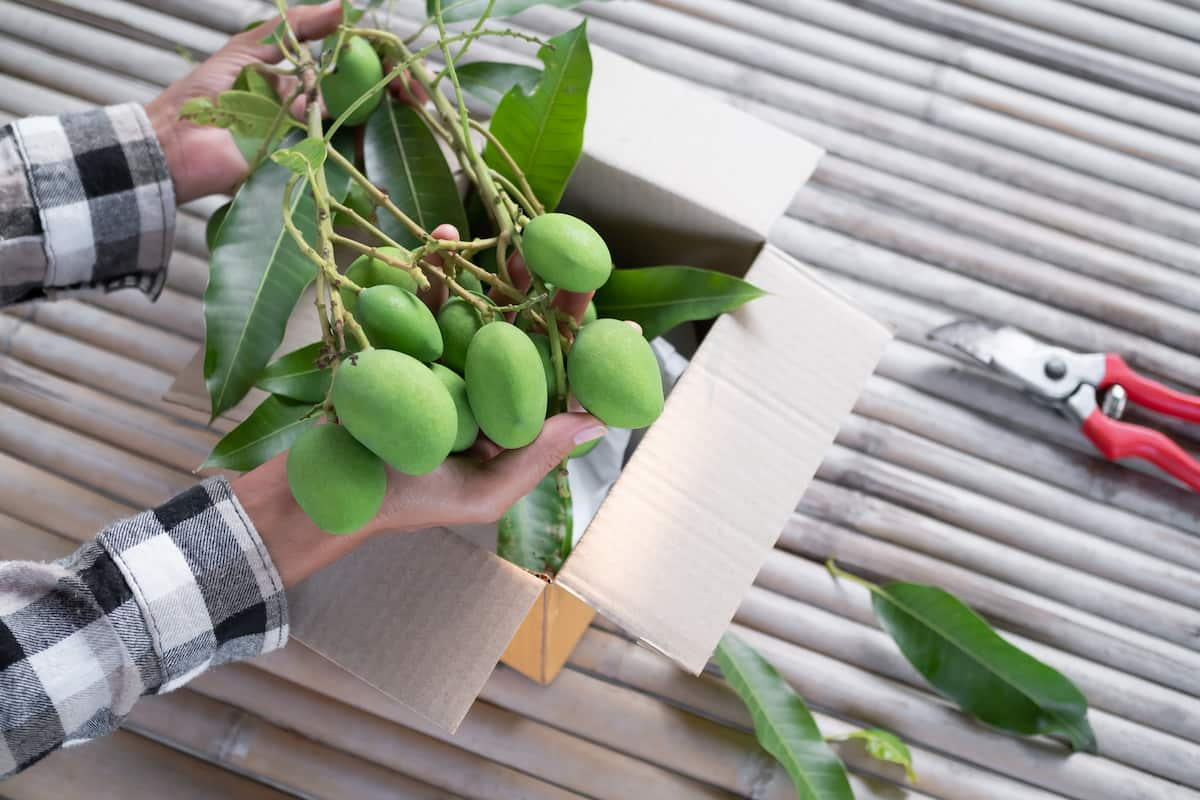Mango Fruit Drop or Low Fruit Set is a complex disorder affecting mango crops’ productivity and profitability. Mango Fruit Drop is a physiological disorder that causes the premature shedding of mango fruits. This disorder can cause significant economic losses for mango growers and exporters due to the reduced quality and marketability of the fruit. This makes the fruit unappealing to consumers, resulting in significant losses for growers and exporters.

Effective management strategies for Mango Fruit Drop disorder involve a combination of cultural, nutritional, and chemical approaches. These strategies may include using irrigation to maintain soil moisture, applying fertilizers to correct nutrient imbalances, and using growth regulators to control hormonal imbalances. Understanding the causes and symptoms of Mango Fruit Drop is essential for effective management strategies to reduce crop losses, improve mango fruit production, and ensure the long-term viability of this important crop.
Mango Fruit Drop and Zinc Deficiency Disorders Management
Characteristics of Mango Fruit Drop Disorder
- The disorder is characterized by the premature shedding of mango fruits, which can occur in large numbers, resulting in significant yield losses for mango growers.
- The disorder is often accompanied by a change in the color and texture of the affected fruit, which becomes soft and wrinkled, making it unsuitable for commercial markets.
- Mango Fruit Drop disorder can occur at different stages of fruit development, including the early stages of fruit development, mid-season, or even close to harvest.
Causes of Mango Fruit Drop Disorder Development
- A combination of environmental, nutritional, and hormonal factors causes the disorder.
- Lack of pollination due to inadequate pollinating agents near the orchards.
- Self-incompatibility occurs when pollen of a flower from the same tree germinates on the stigma of another flower of the same tree.
- Low stigma receptivity will prevent pollen germination and leads to embryo abortion.
- Nutritional imbalances, such as a deficiency of boron, calcium, or magnesium, can also contribute to the development of the disorder.
- Embryo abortion and failure of fertilization will occur in the ovary due to lack of nourishment.
- Water stress and drought conditions during the fruit development phase will develop this disorder.
- The developing fruits compete for limited resources, leading to seed or embryo abortion.
- Hormonal imbalances of ethylene and auxins can also cause Mango Fruit Drop.
- The incidence of pests like hoppers and mealybugs and diseases like anthracnose and powdery mildew makes the crop susceptible to this disorder.
- Exposure of the fruits to unfavorable climatic conditions like hailstorms and strong winds can cause the fruits to drop prematurely.
Favorable Conditions of Mango Fruit Drop Disorder
- Environmental factors such as high temperature, low humidity, and water stress can contribute to Mango Fruit Drop.
- Inadequate irrigation or drought conditions can also contribute to developing the Mango Fruit Drop.
- An excess of ethylene or a deficiency of auxin can disrupt fruit development and lead to premature fruit shedding.
In case you missed it: Mango Gummosis Disease Management: Symptoms, Treatment, Chemical, Biological, Natural, and Organic Control

Management Measures of Mango Fruit Drop Disorder
- Use shelterbelts and windbreaks.
- Use tolerant varieties like Dashehari.
- Irrigate the crops regularly during the fruit development phase.
- Treat partially matured or pea-sized fruits with growth regulators like GA3, Alar, 2,4-D, or NAA to assist proper fruit development.
- Spraying NAA will increase the number of flowers.
- Dip the fruits in calcium solutions to correct any nutritional imbalances.
- Treat the crop with auxins, urea, or nutrient mixtures like KNO3 or micronutrient complexes.
Mango Zinc Deficiency
Mango Zinc Deficiency is a physiological disorder that affects mango crop quality and yields. Mango Zinc Deficiency is caused by a lack of Zinc in the soil or a deficiency in the plant’s ability to absorb Zinc. Zinc is an essential plant micronutrient in various physiological processes, including photosynthesis, enzyme activity, and hormone synthesis. It is a serious disorder that affects the marketability of the fruit, resulting in significant economic losses for mango growers and exporters.
It can significantly impact the quality and yield of the mango crop, leading to economic losses for mango farmers. Effective management strategies for Mango Zinc Deficiency in mango crops involve soil and foliar applications of Zinc to provide a long-term solution to reduce Zinc Deficiency incidence. Understanding the underlying causes of zinc deficiency and developing effective management strategies are essential for sustaining mango production and ensuring the long-term viability of this important crop.
Characteristics of Mango Zinc Deficiency Disorder
- Mango Zinc Deficiency can occur when the soil is deficient in Zinc or when the plant cannot absorb sufficient amounts of Zinc from the soil.
- The little leaf is the major nutritional disorder caused by zinc deficiency in the mango orchard.
- This disorder causes the crop to develop stunted roots, shoots, and foliage.
- In the early stages, the leaves of affected plants may develop a pale green or yellow color between the veins while the veins remain green. This is known as interveinal chlorosis.
- As the deficiency progresses, the leaves may dry, become more yellow and exhibit necrotic patches, and the plant may exhibit stunted growth and reduced fruit production.
- The zinc deficiency in the plant can lead to stunted growth, reduced leaf size, and chlorosis (yellowing) of the leaves.
- The deficiency can also affect the reproductive structures in severe cases, reducing fruit yield and quality.
Causes of Mango Zinc Deficiency Disorder Development
- High Soil pH, Zinc is readily available in soils with a pH level between 6.0 and 7.5. Alkaline soils may hinder zinc absorption, leading to a deficiency in the mango trees.
- Soils with a high calcium carbonate content tend to have lower zinc levels.
- Fertilizers that contain high levels of phosphorus can inhibit zinc absorption.
- Low soil organic matter due to reduced soil microbial activity will cause this disorder.
- Soil compaction can hamper the free movement of Zinc in the soil.
- Excess soil moisture due to over-irrigation and floods also develops this disorder.
Favorable Conditions of Mango Zinc Deficiency Disorder
- Regions with high rainfall and humidity tend to have more zinc deficiency issues as Zinc leaches out of the soil.
- Regions with low rainfall and high temperature may also experience zinc deficiency in mango trees.
- Young mango trees are more susceptible to zinc deficiency than mature trees.
- Mango trees affected by pests and diseases are more likely to have a zinc deficiency.
In case you missed it: Mango Grey Blight Disease Management: Symptoms, Treatment, Chemical, Biological, and Organic Control

Management Measures of Mango Zinc Deficiency Disorder
- Soil application of Zinc can be made by incorporating zinc fertilizers into the soil during planting or through top-dressing.
- The foliar application involves spraying a zinc solution onto the plant leaves.
- Applying soil amendments such as organic matter, lime, and gypsum can also help improve zinc uptake by mango plants.
- Spray Zinc Sulphate once during the flowering stage and again after one month from the first spray.
- Deworming Schedule for Dogs/Puppies: A Beginners Guide
- How to Prevent and Control Parasites in Goats
- Beneficial Insects in Pest Management
- Natural Solutions for Pest Control in Flower Gardens
- Types of Fungicides Used in Agriculture
- Common Issues in the Fruit Development Stage of Pomegranate Farming
- Fruit Development Issues in Papaya: Easy Solutions and Treatment
- Soil-Borne Diseases and How to Protect Your Plants
- Practices to Prevent Disease Spread in the Garden